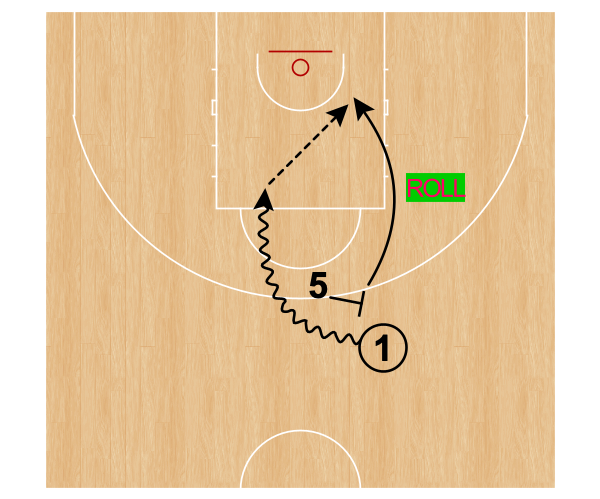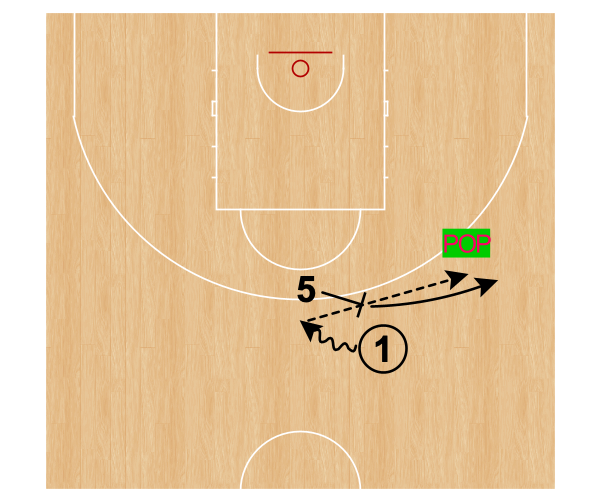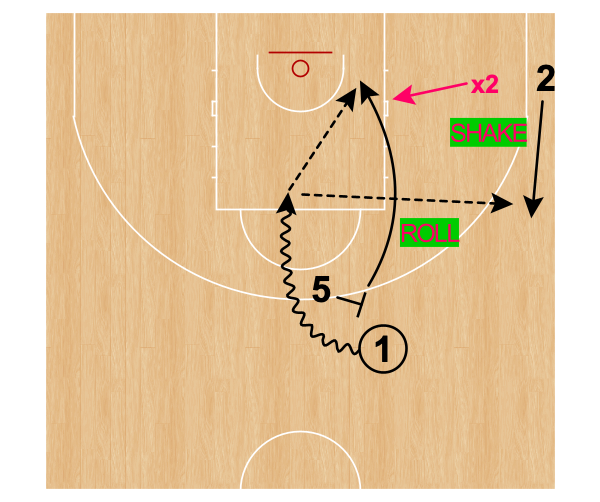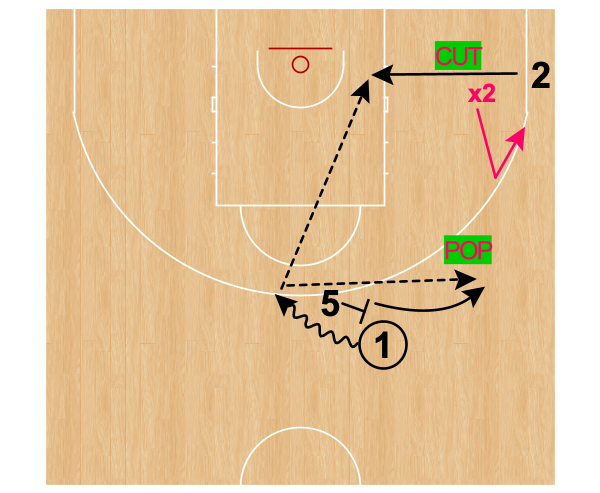If you are football fan, chances are you’ve heard the term “RPO” during broadcasts. In that sport it is an acronym for the “Run/Pass Option” concept where the quarterback is reading the defense and based on that read the play could be a run or a pass.
In basketball, and in the ball screen in particular, we are borrowing that acronym and calling it the “Roll/Pop” Option. The screener has the option to roll to the basket or pop to the perimeter.
Whether they roll or pop could be determined by the ball screen defense employed by your opponent. It could be determined by skill set of the player. A shooter might be a “pop” guy while a bruiser may be a “roll” guy. A versatile player may have the option to do either.
ROLL or POP

In Fig. 1 above, Player 5 sets the ball screen and rolls to the basket – a common pick-and-roll.

In Fig. 2, Player 5 pops to the perimeter after setting the ball screen. This could also be a “Ghost” concept.
Rolling or popping could be up to the player or driven by skill set. It is important that the offense work in conjunction with the screener to enhance the effectiveness and add to the conceptual nature of the RPO.
If/Then’s
Let’s give some simple “IF/THENs” for the nearest player outside the ball screen.

IF Player 5 rolls, THEN Player 2 shakes up from the corner.
This is a counter to many ball screen coverages where X2 would be tasked with “tagging” the roller. Player 5 decides to roll. Player 1 sees x2 tag the roller and knows the shake man (Player 2) has an advantage.

In Fig. 4 above, Player 5 has decided to pop after screening. This could also be a Ghost concept. If we have gotten two defenders on the ball and throw back to Player 5 popping, X2 may have to stunt at Player 5 to prevent the open three. How do we counter this?
IF we pop, THEN cut to the rim.
“Cutting the stunt” puts X2 in a dilemma: stunt and your man may cut to the hoop for an easy one. If you don’t stunt or go with the cutter, then the pop man is open.

Above is an example of Alabama-Huntsville cutting the stunt. The cut prevented the defender from stunting at the pop man creating an open pick-and-pop three.
In the RPO concept we are giving players the freedom to either roll or pop. Combining that with simple and straightforward decisions for the nearest player outside the ball screen builds out the RPO and make it harder for the defense to be “right.”
Continue the conversation:
If you want to talk more X’s & O’s, join our community for basketball coaches!
Enjoy all our basketball coaching resources.
Any questions, contact us! Happy to talk hoops any time day or night!
